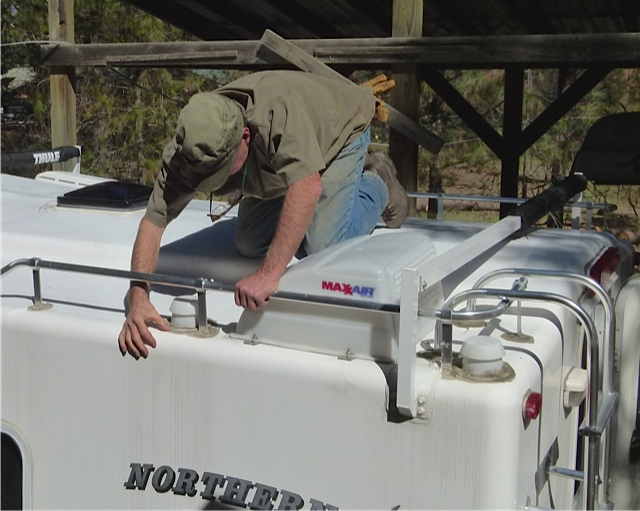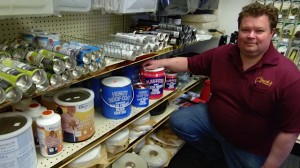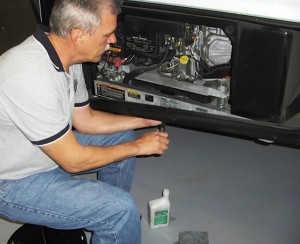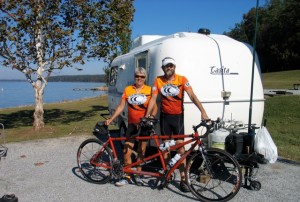 In this third installment of a four-part series on sprucing up your recreation vehicle for the family camping season, it’s time to check your rig’s exterior.
In this third installment of a four-part series on sprucing up your recreation vehicle for the family camping season, it’s time to check your rig’s exterior.
– RV Exterior and Seams: “Inspect all roof and body seams, and around any openings cut into the RV, for signs of cracking or damage,” said Mark Polk of RVEducation101.com. “Reseal any seams or sealants that show signs of separation.”
According to John Melaas, manager at Chuck’s RV parts and service center in Mead, Wash., there are primarily three different types of roof materials– fiberglass, metal, and rubber roofs.
 “Be certain to purchase the sealant that is compatible with your RV roof,” he said.
“Be certain to purchase the sealant that is compatible with your RV roof,” he said.
Also check the roof vents and skylights for damage, said Melaas. “With heavy snow falls,” he explained, “we have sold a ton of vent covers.”
– RV Tires: Check tire pressure and adjust to the manufacturer’s recommendation based on the load. Inspect the tires for tread wear and any cracking on the tire sidewalls.
“Remember, failing to maintain correct tire pressure, based on the load,” said Polk, “can result in faster tread wear, uneven wear, poor handling, and excessive heat build-up which can lead to tire failure.”
 – Vehicle Engine and Generator: These checks apply to motor homes and any vehicle you use to tow a trailer or haul a slide-in camper.
– Vehicle Engine and Generator: These checks apply to motor homes and any vehicle you use to tow a trailer or haul a slide-in camper.
Check all of the engine’s fluid levels including the transmission, power steering, coolant, oil, windshield washer, and brake fluid.
“If a fluid level is low, try to determine why and correct the problem,” advised Polk. “Start the engine and check for proper readings on all gauges. Check the operation of all lights.”
If you carry a generator, check the oil level and inspect the exhaust system for any damage prior to starting. “If the generator hasn’t been turned over during storage, start and run it for a couple hours with at least a half-rated load,” said Polk.
If you missed part 1 on RV batteries, click here.
For part 2 on sanitizing your water system, click here.
In part 4, we’ll go over checking appliances and safety devices.
Photos: (Top) Jimmy Smith of Eastern Washington, carefully checks the RV’s roof for leaks and possible cracks in the sealants. (Julianne G. Crane)
(Middle) John Melaas, manager at Chuck’s RV parts and service center in Mead, Wash., says there are three roof materials (rubber, fiberglass and metal) which require different sealants. (Julianne G. Crane)
(Bottom) RV technician Mark Polk of RVEducation101.com changes generator’s oil as part of an annual spring maintenance routine. (RVEducation101.com)




